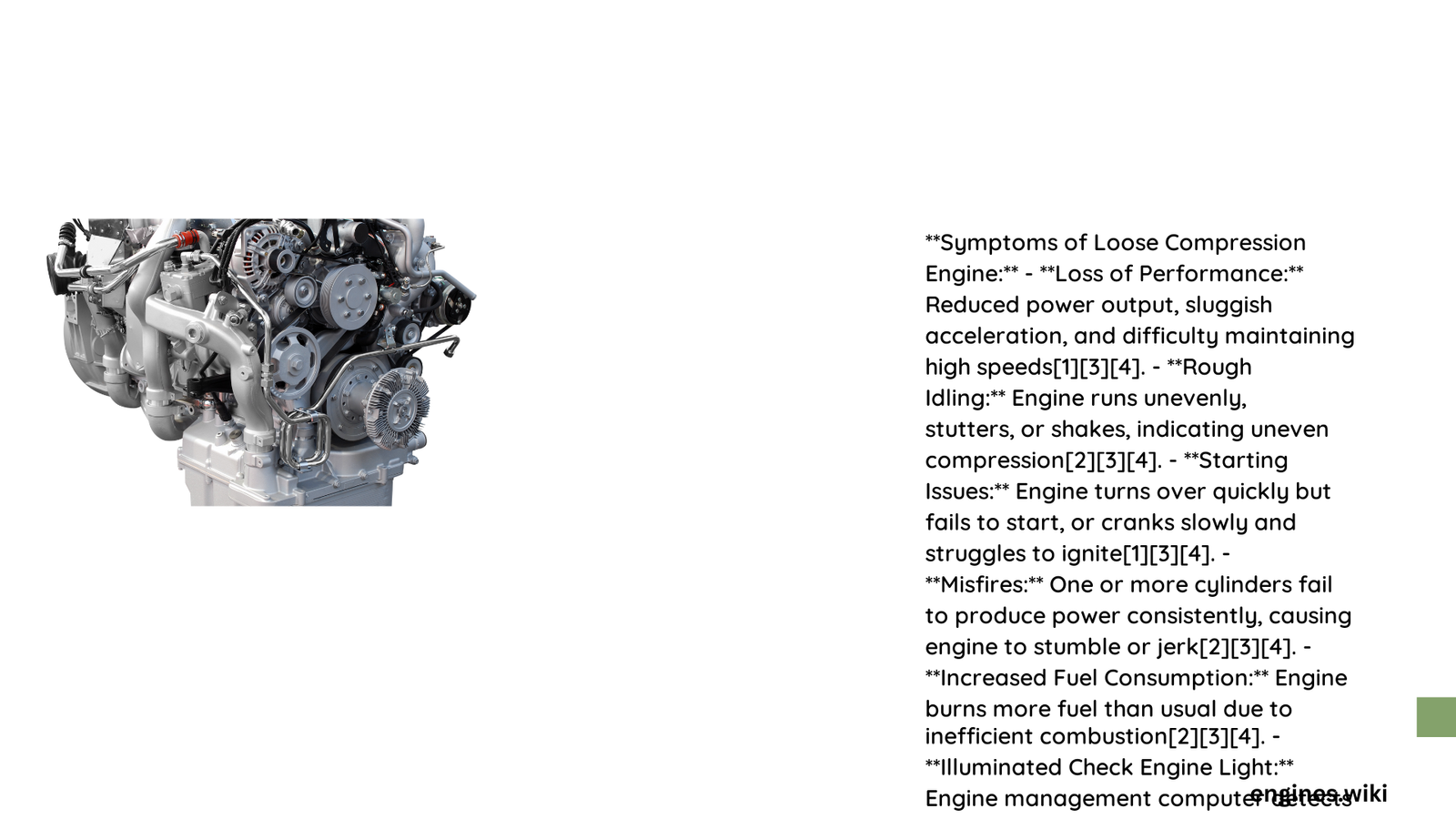Loose Compression Engine Symptoms: A Comprehensive Technical Overview
Low compression in an engine can manifest through multiple critical symptoms that signal potential mechanical deterioration. Vehicle owners experiencing reduced performance, unusual engine sounds, excessive exhaust smoke, and unexpected fuel consumption changes might be facing serious compression-related issues that require immediate professional assessment and potential repair.
What Are the Primary Performance Indicators of Low Engine Compression?
Engine compression loss represents a significant mechanical challenge that directly impacts vehicle performance. The symptoms can range from subtle performance changes to dramatic mechanical failures. Here’s a comprehensive breakdown:
Power Output Reduction Mechanisms
- Horsepower Degradation
- 50% power loss possible with multiple cylinder misfires
- Proportional reduction based on affected cylinder count
-
Noticeable during acceleration and high-load scenarios
-
RPM Instability Patterns
- Irregular engine speed fluctuations
- Jerky acceleration characteristics
- Inconsistent power delivery
Diagnostic Exhaust Smoke Analysis
| Smoke Color | Potential Indication | Diagnostic Significance |
|---|---|---|
| Blue Smoke | Oil entering combustion chamber | Worn piston rings/cylinder walls |
| White Smoke | Coolant leakage | Potential head gasket failure |
| Gray Smoke | Incomplete fuel combustion | Potential ring/valve seal issues |
How Do Compression Issues Manifest Through Engine Sounds?
Mechanical wear produces distinctive audio signatures that experienced mechanics can interpret:
- Low-Frequency Knocking
- Typically 100-500 Hz range
- More pronounced during idle conditions
-
Indicates potential piston ring or cylinder wall degradation
-
High-Intensity Grinding Noises
- Suggests advanced mechanical component failure
- Often related to camshaft or valve system damage
- Increases with engine load
What Impact Does Compression Loss Have on Fuel Efficiency?
Compression degradation directly influences fuel consumption through:
- Estimated Efficiency Reduction
- 10-20% potential fuel economy decline
- Proportional to compression loss severity
- Higher impact in challenging driving conditions
Critical Diagnostic Considerations
Vehicle owners should recognize these key diagnostic indicators:
- Persistent performance inconsistencies
- Unusual exhaust smoke characteristics
- Abnormal engine sound patterns
- Unexpected fuel consumption increases
Recommended Diagnostic Approach
- Conduct professional compression test
- Inspect piston rings and cylinder walls
- Evaluate valve seal conditions
- Check head gasket integrity
Prevention and Maintenance Strategies
- Regular oil changes
- Consistent engine maintenance
- Timely diagnostic assessments
- Address minor issues before catastrophic failure
Technical Complexity Warning
Compression issues represent advanced mechanical challenges requiring specialized diagnostic equipment and professional expertise. DIY diagnostics without proper training can potentially cause additional damage.
Conclusion
Recognizing loose compression engine symptoms early can prevent extensive mechanical damage and costly repairs. Professional assessment remains the most reliable diagnostic approach.

